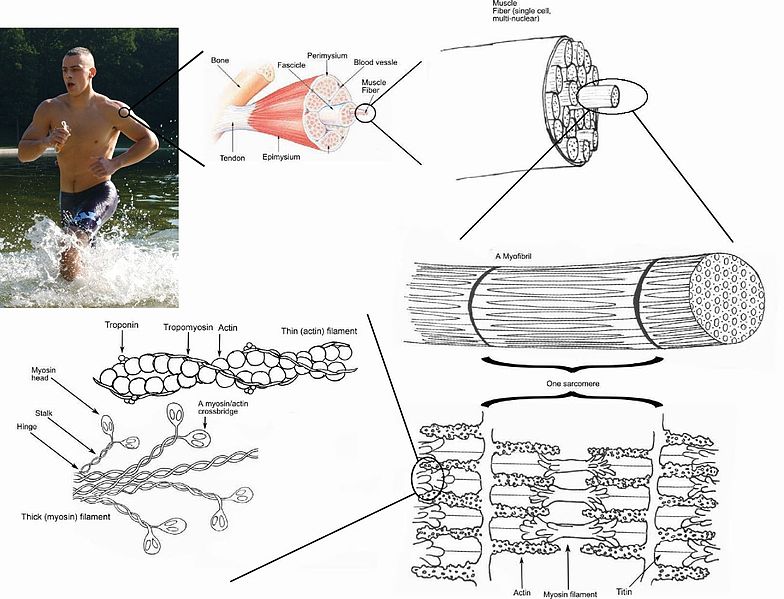Delayed onset muscle soreness (DOMS)
Top Contributors - Aimee Tow, Shaimaa Eldib, Kim Jackson, Mudra Shah, Joao Costa, Claire Knott, Wanda van Niekerk, Gareth Geoffreys and Lucinda hampton
Introduction[edit | edit source]
Delayed onset muscle soreness (DOMS) is a sore, aching, painful feeling in the muscles after exhaustive or intense exercise. DOMS is thought to be due to temporary muscle damage and inflammation especially after eccentric exercises. The soreness reaches a peak after 24-48 hours. 
Prevention[edit | edit source]
DOMS generally gets better on its own after a few days to a week. However, during that time range of motion and muscle performance can be reduced. There is some evidence that anti-inflammatory medications, massage[1], compression garments[2], and some supplements can reduce the duration of DOMS,
Implications for physical therapy[edit | edit source]
Many physical therapy patients will be starting a new exercise program or will be adding new exercises to their current exercise program. These exercises may be intense for the patient and the patient may experience delayed onset muscle soreness (DOMS) after starting a physical therapy or exercise program. Therefore, it is important for the therapist to reassure the patient that DOMS is a normal part of a new exercise program and to help the patient differentiate muscle soreness from other types of pain. It is also important to note that the severity of the soreness is not related to the extent of the exercise-induced muscle damage.[3]
Resources[edit | edit source]
References[edit | edit source]
- ↑ Guo J, Li L, Gong Y, Zhu R, Xu J, Zou J, Chen X. Massage alleviates delayed onset muscle soreness after strenuous exercise: a systematic review and meta-analysis. Frontiers in physiology. 2017 Sep 27;8:747.
- ↑ Kim J, Kim J, Lee J. Effect of compression garments on delayed-onset muscle soreness and blood inflammatory markers after eccentric exercise: a randomized controlled trial. Journal of exercise rehabilitation. 2017 Oct;13(5):541.
- ↑ Nosaka K, Newton M, Sacco P. Delayed‐onset muscle soreness does not reflect the magnitude of eccentric exercise‐induced muscle damage. Scandinavian journal of medicine & science in sports. 2002 Dec 1;12(6):337-46.






